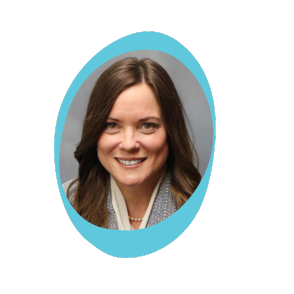When the compliance team visits another department, staff responses are usually the same: we must have done something wrong.
This isn’t the response that you want. The compliance department and staff should be seen as approachable, working in a collaborative fashion to make the organization more successful. If the compliance department only comes in to run audits and give “constructive” feedback, then compliance will quickly become known for negativity and criticism.
Collaboration
It is important to collaborate with other departments and incorporate a holistic organizational approach. This means valuing what other team members have to offer with regards to compliance in the organization. It can be easy for compliance professionals to make black or white statements regarding compliance with a specific regulation or policy. After all, it’s there in writing — in black and white.
But, other teams can sometimes bring to light another perspective. There may be gray areas in the written requirements or overall process and addressing these could benefit the organization without compromising compliance.
Or, compliance professionals could demonstrate openness to evaluating how requirements and regulations are impacting specific operational workflows. For example, when evaluating a compliance process for telehealth visits related to obtaining consent, the operations leader should be given an opportunity to work with compliance in developing the process.
In-Person Education
One approach to improving collaboration with other departments is to conduct in-person education and question and answer (Q&A) sessions. Ask all department leaders if you can have ten (but no more than fifteen) minutes at their next staff meeting to introduce the compliance team and to solicit compliance-related topics and questions. Before the meeting, make sure to get the department leader to provide two to three compliance-related topics that would be of interest to their team. Prepare a short slide presentation to use in the meeting — typically, one slide per topic and one Q&A slide at the end.
During the meeting, make sure to leave at least five minutes for compliance Q&A. Listen to the staff questions and solicit information on challenges or knowledge gaps related to compliance, so follow up can be done with the that department or team.
Follow-Up Education
Follow up should be timely (within three to four weeks) and can be done a few different ways: short videos, posts on the internal intranet or website, email education, or additional in-person follow up education. There are several excellent (and free) applications available online where you can create short, two- to three-minute compliance videos that can then be distributed to staff.
Follow-up education could also be done by email if the topic and question and answer lends itself to an email response. For example, if staff ask a question about HIPAA’s application to texts or emails, it would be fairly easy to find a one-page summary on the application of HIPAA to texts and emails and attach that to an email.
Volunteers
Another way to improve collaboration would be to have compliance staff volunteer to participate in organization committees not directly related to compliance. For example, compliance professionals could join the policy committee or the activities committee. In this way, the compliance team can develop positive relationships with others in the organization, in an open and approachable way.
Practice Tip:
- Reach out to at least 3-4 departments before the end of the year to schedule and conduct in-person meet and greets with a focus on compliance education.
- Utilize services such as youCompli to stay current on compliance topics and regulations to present during your meet and greet meetings.
Denise Atwood, RN, JD, CPHRM
District Medical Group (DMG), Inc., Chief Risk Officer and owner of Denise Atwood, PLLC
Disclaimer: The opinions expressed in this article or blog are the author’s and do not represent the opinions of DMG.

Denise Atwood, RN, JD, CPHRM has over 30 years of healthcare experience in compliance, risk management, quality, and clinical areas. She is also a published author and educator on risk, compliance, medical-legal and ethics issues. She is currently the Chief Risk Officer and Associate General Counsel at a nonprofit, multispecialty provider group in Phoenix, Arizona and Vice President of the company’s self-insurance captive.
See YouCompli in Action
Easier, faster, more effective compliance is possible
